
Parts of a mill



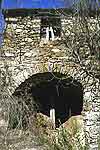
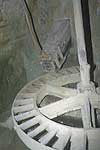
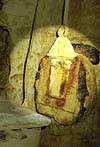
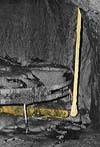
Originally the rodete was made from several kinds of wood. But later on metallic wheels replaced the wood.
The construction of the engine is straightforward. A long vertical axis goes through the roof of the cárcavo. The lower end bears the wheel, rodete. The runner stone is connected to the upper end of the axle.
The inlet-pipe, botana, injects the water over the rodete. The valve, tajadera, with rod on top makes it possible to control the water-flow. Sometimes a paradera was present (e.g. Sarsa da Surta) which would cut the flow entirely and stop the movement of the stones.
The levador is a lever used to adjust the space between the mill stones. The miller decided in this way on the number of revolutions and the quality of the flour.
Both controls were managed from the work floor.



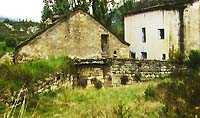
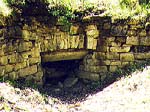
The tricklet is dammed upstream (azud) and serves as a reservoir for the water brought to the mill by a canal, sometimes several hunderd meters long. The water can also be kept in a most often small, but sometimes impressive (Samper), mill pond (balsa) nearby.
The balsa discharges through the saetín: the inlet of the botana.
In many cases, the canal, or the balsa ends in a very deep pressure pit: the cubo used to build up the necessary pressure. (f.e. Nueno, Alavés, Ara)
|
The Engine The Powersource The Workplace |